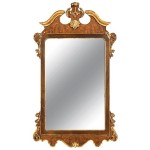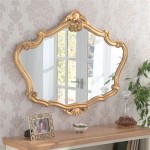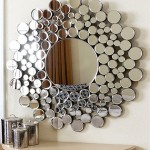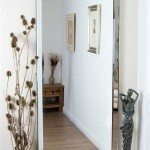```html
Antique Gilt Mirrors: A Timeless Elegance
Antique gilt mirrors are more than just reflective surfaces; they are historical artifacts, embodying artistry and craftsmanship from past eras. The term "gilt" refers to the application of a thin layer of gold, or a gold-colored substance, typically to a base metal or wood. In the context of antique mirrors, gilding enhances the frames, creating a luxurious and visually striking effect. These mirrors offer a glimpse into prevailing styles and decorative preferences of specific periods, making them highly sought after by collectors, interior designers, and individuals seeking to add a touch of historical sophistication to their homes.
The allure of antique gilt mirrors extends beyond their aesthetic appeal. Their intrinsic value lies in a combination of factors: the quality of materials used, the intricacy of the design, the skill of the artisans who created them, and their historical provenance. A well-preserved antique gilt mirror can command a significant price, particularly if it boasts a rare design, originates from a renowned workshop, or is associated with a notable historical figure or event. Therefore understanding the nuances of antique gilt mirrors is crucial for both appreciating their beauty and assessing their value.
Identifying Key Characteristics of Antique Gilt Mirrors
Identifying genuine antique gilt mirrors requires a keen eye and a basic understanding of historical styles and manufacturing techniques. Several key characteristics can aid in this process. Firstly, the type of gilding employed is a critical indicator. Traditional methods involved applying gold leaf, a process that required meticulous skill and patience. Examining the surface under magnification can reveal subtle imperfections and variations in the gold leaf, which are characteristic of hand-applied gilding. Modern reproductions often utilize spray-on or chemical gilding, which typically results in a more uniform and less nuanced finish. The presence of tarnish, wear, and slight imperfections are often indicative of age and authenticity, as they are the result of natural oxidation and wear over time in a real antique gilt mirror.
Secondly, the style of the mirror frame is a crucial identifier of its era. Different periods favored distinct decorative motifs and frame shapes. For example, Louis XV mirrors often feature elaborate rococo carvings with asymmetrical scrolls, floral elements, and shell motifs. Georgian mirrors tend to be more restrained, with symmetrical designs and classical architectural detailing. Victorian mirrors might incorporate elaborate floral arrangements, intricate fretwork, or elements of the Gothic revival style. Familiarizing oneself with the decorative vocabulary of different periods is essential for accurately dating an antique gilt mirror. Furthermore, the type of wood used for the frame can also provide clues to its origin. Mahogany, walnut, and oak were commonly used in antique mirror frames, depending on the period and region of manufacture.
Thirdly, the glass itself is a significant indicator of age. Antique mirror glass was manufactured using different techniques than modern glass, resulting in subtle variations in its appearance. Historically, float glass had not yet become the norm for mirror making. Antique mirrors often have some irregularities, waviness, or cloudiness. These imperfections, while not always desirable in modern mirrors, are often considered to be part of the charm and character of an antique mirror. The presence of "foxing," small dark spots or blemishes on the glass, is also a common characteristic of antique mirrors. Foxing is caused by the oxidation of the silver backing of the mirror and is a sign of age. Examining the back of the mirror and the way the glass is held in place can also provide clues about its authenticity. Antique mirrors typically have wooden backings, often secured with nails or screws that are consistent with the period in which the mirror was made.
Understanding the Historical Context of Antique Gilt Mirrors
To fully appreciate antique gilt mirrors, it is essential to understand their historical context. The history of gilt mirrors is intertwined with the evolution of glassmaking, gilding techniques, and interior design trends. Gilded mirrors first appeared in Europe during the Renaissance, becoming status symbols for wealthy families. Their intricate designs and gilded surfaces reflected not only the image but also the affluence of the owner. Mirrors were initially very expensive and difficult to manufacture, making them rare and valuable possessions. The advancement of glassmaking techniques over time made mirrors more accessible but antique examples still embody rich history.
During the 18th century, France emerged as a major center for mirror manufacturing, setting the standard for quality and design. French gilt mirrors from the Louis XV and Louis XVI periods are particularly prized for their elegance and craftsmanship. These mirrors often featured elaborate carvings, delicate gilding, and exquisite attention to detail. English mirror makers also produced high-quality gilt mirrors during this era, often incorporating elements of the neoclassical style. The Regency period in England (early 19th century) saw the rise of convex mirrors, which were often framed with gilt eagles or other decorative motifs. These mirrors were popular for their wide field of view and their ability to add a touch of grandeur to interior spaces.
The Victorian era witnessed a proliferation of mirror styles, reflecting the eclectic tastes of the time. Gilt mirrors from this period often incorporated elements of various historical styles, including Gothic revival, Renaissance revival, and Rococo revival. Mass production techniques made mirrors more affordable, but the quality of craftsmanship varied widely. Identifying mirrors from certain periods or manufacturers can greatly influence their value. For example, mirrors from a specific workshop during a certain era may carry a higher price tag due to the quality of their construction and artistry. Knowing the manufacturer's mark or signature can be crucial for determining authenticity and value.
Care and Restoration of Antique Gilt Mirrors
The care and restoration of antique gilt mirrors requires a delicate touch and a thorough understanding of conservation principles. Improper cleaning or restoration techniques can irreversibly damage the mirror's delicate surface and diminish its value. Regular cleaning should be done using a soft, dry cloth to remove dust and grime. Avoid using harsh chemicals or abrasive cleaners, as these can damage the gilding. For removing ingrained dirt, use a dampened cloth with mild soap, carefully drying immediately. The mirror glass itself may be cleaned with glass cleaner, but care must be taken to avoid getting any cleaner on the gilded frame.
When considering restoration, it is crucial to consult with a qualified conservator who specializes in antique furniture and mirrors. Professional conservators have the expertise and knowledge to properly assess the condition of the mirror, identify the appropriate restoration techniques, and carry out the work in a way that preserves the mirror's historical integrity. Common restoration tasks include repairing damaged gilding, replacing broken glass, and stabilizing the frame. Repairing damaged gilding is a complex process that requires skill and patience. The conservator will carefully clean the surface, remove any loose or flaking gold, and then apply new gold leaf to match the original finish. The goal is to seamlessly integrate the new gold with the existing gilding, preserving the mirror's original appearance.
Replacing broken glass in an antique mirror can be challenging, as it is often difficult to find glass that matches the original in terms of thickness, color, and surface texture. A conservator may be able to source antique glass from salvage yards or specialized suppliers. If antique glass is not available, the conservator may use modern glass that has been treated to mimic the appearance of antique glass. Stabilizing the frame is another important aspect of restoration. The conservator will carefully examine the frame for any signs of damage, such as cracks, splits, or loose joints. They will then repair the frame using appropriate techniques and materials, ensuring that it is structurally sound and stable. Ultimately, the goal of restoration is to preserve the mirror's beauty, historical significance, and monetary value for generations to come.
```
859 Antique Gilt Mirrors For Ingantiques Co

Nineteenth Century French Gilt Mirror Lassco England S Prime Resource For Architectural Antiques Salvage Curiosities

Hardy Gold Gilt Antique Crested All Glass Large Leaner Mirror 192 X 134cm

A Spectacular Large Antique French 19th Century Original Gilt Mirror

Antique Gilt Mirrors

Antique Gilt Wall Mirror Wood Gold Carved Chippendale Landscape Antiques Georgian Furniture Regency Victorian
Imposing 19th Century Large Gilt Mirror Nimbus Antiques

Antique French Gilt Mirror Delos Antiques

Antique Oval Gilt Mirror 18th Century Giltwood Rococo Style Wall Convex Pair Of Overmantel And

Large Antique Gilt Mirror With Crest In Rococo Style Piet Jonker







